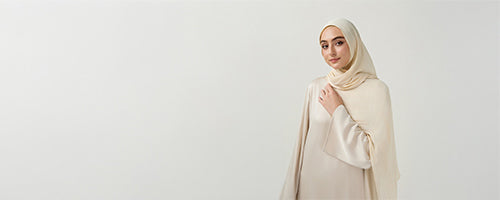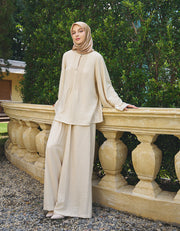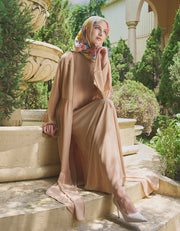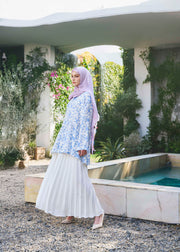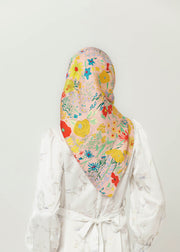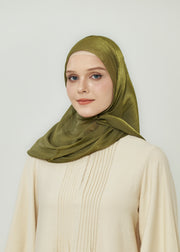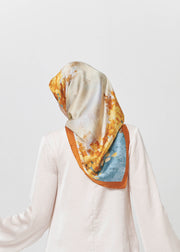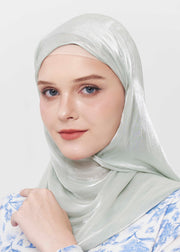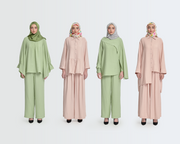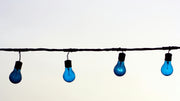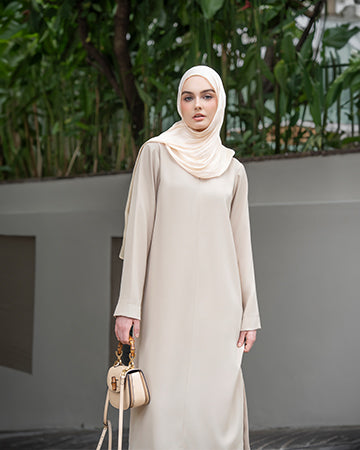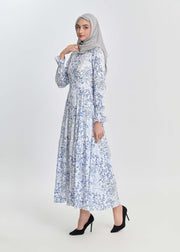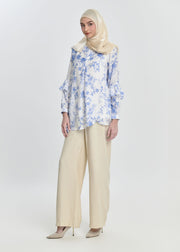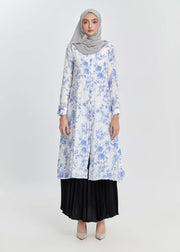What Do Colors Mean in Islamic Fashion?
Color as a Cultural and Spiritual Language
In Islamic fashion, color is more than just a stylistic choice—it’s a symbol of identity, emotion, tradition, and faith. While modesty remains the guiding principle, Islamic fashion colors carry cultural, spiritual, and even seasonal meanings that resonate deeply with Muslim communities around the world. From the sacred symbolism of green to the elegance of black, each color tells a story.
Let’s explore the meanings behind the most common colors in Islamic clothing and how they influence fashion choices today.
Green: The Color of Paradise and Peace
Green holds a unique and highly revered place in Islamic tradition. It is often associated with paradise (Jannah), mentioned in the Qur’an as the color of garments worn in the afterlife. Green also symbolizes growth, nature, renewal, and tranquility.
In Islamic fashion, green is widely used during religious celebrations like Eid or weddings. You’ll see rich emerald abayas, jade-toned hijabs, and olive maxi dresses as symbols of prosperity and peace.
Fashion tip: Pair deep green hijabs with gold accessories for a regal, spiritually rooted ensemble.
Green: The Color of Paradise and Peace
White: Purity, Simplicity, and Spiritual Cleanliness
White is a symbol of purity and peace across many cultures, but it has special meaning in Islam. It is the preferred color for the Ihram, the clothing worn by pilgrims during Hajj. It reflects humility, equality, and cleanliness before God.
In daily Islamic fashion, white abayas, jilbabs, or hijabs represent a clean slate. It’s a popular choice for Friday prayers, Ramadan events, and Nikah ceremonies.
Fashion tip: A crisp white hijab adds serenity to any outfit and pairs beautifully with pastels or earthy tones.
White: Purity, Simplicity, and Spiritual Cleanliness
Black: Elegance, Modesty, and Power
Black is one of the most dominant Islamic fashion colors today. While it’s often associated with modesty and discretion, it also exudes timeless elegance and strength. In many Gulf countries, black abayas are not only traditional but also considered a symbol of national pride and identity.
Though some see black as somber, it remains a versatile choice—suitable for both daily wear and formal events.
Fashion tip: Elevate a black abaya with a colorful hijab or statement jewelry to create contrast while maintaining modesty.
Black: Elegance, Modesty, and Power
Blue: Serenity, Wisdom, and Divine Protection
Blue is another calming and spiritual color that holds meaning in various Islamic cultures. Often associated with the sky and water, blue represents serenity, stability, and divine protection.
In Islamic fashion, navy and sky blue garments reflect professionalism and grace. They're a favorite for modest office wear, casual dresses, and even prayer outfits.
Fashion tip: A powder blue hijab paired with neutral tones makes for a soft, confident look.
Blue: Serenity, Wisdom, and Divine Protection
Red and Maroon: Passion and Strength with Modesty
While bold reds may not be as common in everyday Islamic attire due to their intensity, deeper tones like maroon and burgundy are widely appreciated. These shades represent strength, warmth, and femininity while remaining elegant and modest.
You’ll often see these hues in evening abayas, wedding dresses, or festive hijabs, especially in South Asian and Middle Eastern fashion.
Fashion tip: Combine maroon with cream or gold accents for a sophisticated yet culturally resonant outfit.
Red and Maroon: Passion and Strength with Modesty
Brown and Earth Tones: Humility and Connection to Nature
Earthy colors like beige, taupe, camel, and chocolate brown are growing trends in modern Islamic fashion colors. These tones reflect humility, grounding, and a connection to the natural world—values that align closely with Islamic teachings on simplicity and sustainability.
They’re especially popular for minimalist styles, capsule wardrobes, and eco-conscious modest fashion lines.
Fashion tip: An earth-tone hijab with a linen tunic gives an effortlessly natural and modest appearance.
Brown and Earth Tones: Humility and Connection to Nature
Pastels: Softness and Modern Femininity
While not rooted in traditional symbolism, pastel tones like blush pink, lilac, mint, and baby blue have found a strong place in contemporary modest fashion. These soft hues symbolize femininity, youthfulness, and grace.
They’re widely used in everyday hijabs, casual abayas, and spring/summer collections, bringing a fresh, delicate touch to Islamic fashion.
Fashion tip: Pastel hijabs go beautifully with white or cream outfits for a fresh, modest spring look.
Pastels: Softness and Modern Femininity
Combining Symbolism with Personal Style
Understanding the symbolic meaning behind Islamic fashion colors allows Muslim women to make more intentional fashion choices that align with their beliefs and personal expression. Whether dressing for prayer, celebration, work, or daily life, color can enhance both modesty and identity.
The modern Muslim woman is empowered to blend tradition with trend—choosing colors that are meaningful, flattering, and faith-conscious all at once.
Conclusion: A Colorful Expression of Faith and Identity
In Islamic fashion, color isn't just decoration—it's communication. It speaks of faith, purpose, and inner peace. From the reverence of green to the minimalism of white and the strength of black, each hue serves as a visual extension of modesty and belief.
So the next time you select a hijab, abaya, or dress, consider not just how it looks—but what it says.
Ready to add deeper meaning to your wardrobe? Discover a curated range of Islamic fashion colors—from symbolic classics to modern essentials—at Minnaba, where style meets spirituality.

